A Look Back: Our Korean Wedding Ceremony
Last Updated on October 19, 2023
Three years ago at the end of October, my family from the States arrived to Seoul and we made our way down to Busan to prepare for my first wedding ceremony to my husband. Though it’s not our “official” anniversary because we chose our subsequent American wedding ceremony date in January, that doesn’t stop us from receiving a card yearly from my grandmother wishing us a “Happy Anniversary” in October.
Every year about this time, the leaves begin to change colors and I am taken back to images of the colorful Hanbok that I wore for our ceremony surrounded by family and friends outside on a gorgeous day with blue skies and calm autumn breezes in my husband’s hometown.

(This post contains affiliate links, which means I receive a certain percentage of a sale if you purchase after clicking at no cost to you. Thank you for your support.)
Like any wedding ceremony, there were hitches from the officiant wanting to start early and me not wanting to to errors in communication. Who starts a ceremony early afterall? If anything, we should be fashionably late in order to allow all of our late comers to arrive. Our photographer didn’t actually photograph any of the ceremony. Thankfully and without even knowing I would have to, I had handed my camera to my sister’s boyfriend and just told him to snap as many pictures as he could. He did amazingly and had no qualms about walking all around throughout the ceremony like a photographer should and those are all of the beautiful photos that I have from that day.
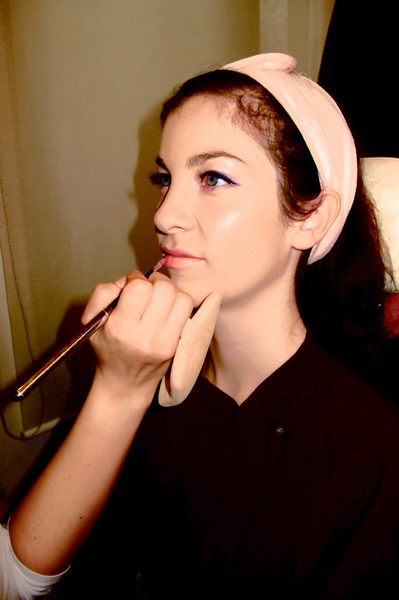


One of the girls that was supposed to stand by my side and help me rise and bow the 20 odd times that I would need to in the traditional ceremony was so late in arriving that I had to call another friend from the seats and gave her my Hanbok, that I just happened to have, to wear so that she could help me throughout the ceremony. I didn’t have to wear my own Hanbok in the end as I had the wedding Hanbok and the Paebaek Hanbok provided to me, but I had brought my own just in case. A just-in-case scenerio arose and me, ever the planner, was prepared. The hitches just add to the story though, I think.

Getting dressed in the Hanbok fit for Joseon royalty took hours along with the make-up and hair pinning but I turned out beautiful, if I do say so myself. Getting dressed in the Hanbok didn’t feel so much like I was getting dressed for my wedding day because it wasn’t the white dress that I had envisioned, but in the end I was glad it was so different from my mother’s white dress in the American ceremony that I wore later.
The two ceremonies were so different that there is really no comparing them. The Korean ceremony encompassed so much of what I have grown to love about Korea from the colorful traditional buildings and Hanboks to the respectful bowing and quiet gracefulness that the conservative culture requires. Another aspect of living here has been accepting with a laugh or a giggle whatever might be thrust in front of me that I’m not expecting and this ceremony certainly had many of those kinds of moments too.


The Hanbok dates back to the Three Kingdoms Period in Korea from 57BC to 668AD but the Hanboks often worn today date back to the Joseon period from 1392 to 1910. Unlike the often tighter fitting wedding gowns of the west, the Hanbok is all about showing off the curves and elegance that a woman has when she floats across the floor in the multiple layers of cloth draped about her. Getting dressed in a royal Hanbok by women who adeptly pinned and tied the clothes was an experience even before I enjoyed the experience of the ceremony.

Once we were all done up, we made our way to the outdoor setting for the traditional ceremony. I was happy to notice that everyone was quiet throughout which is often not the case at wedding ceremonies in Korea. It seems that Koreans don’t find a wedding ceremony nearly as awe inspiring and beautiful when two people decide to join together for life as I do. For our ceremony, however, everyone was quiet and watched carefully. Most of my husband’s friends had never seen a Korean traditional ceremony and were just as interested in it as we were.
Our mothers started off by walking down the aisle together and lighting candles to invoke the god of heaven. Once they were seated, my husband entered with his attendant carrying a goose that he gave to my mother to symbolize that we would model after the three virtues of wild geese: mating for life, following the hierarchical order and leaving traces when we’ve come. I like to think we’ve left traces everywhere we have gone since then.
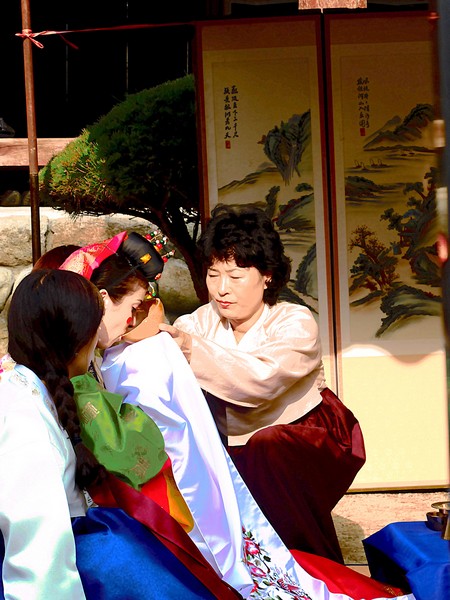
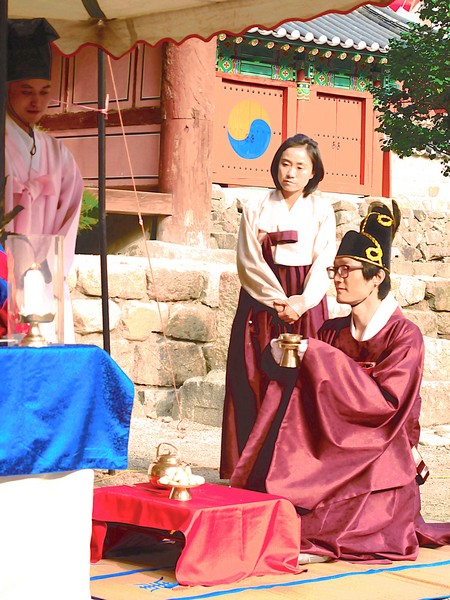
Finally I entered, with the help of my attendants and I was placed on the west side of the table while my husband was placed on the east. While I had to bow six times, my husband only had to bow twice. Though I had tried to get it switched to four and four to make it equal and fair just as our relationship would be, no one was having that. We bowed to each other to pay homage to our union as a couple and to pledge our respect for each other throughout our lives.
Over and over again we bowed and each time I had to bow more times than he. We raised cups of Korean wine to each other and drank them and drank from a gourd that had been split in half which symbolized the two of us becoming one and whole again. Throughout the ceremony the officiant spoke and interestingly even my husband didn’t understand what he was saying.

The ceremony was done in a very old, more akin to Chinese, Korean dialect. While at first I felt awkward not able to understand what he was saying, I found myself calmly smiling and holding back chuckles as I realized my Korean attendants and my soon to be husband on the other side of the table also did not understand. We drank, we bowed and we joined our lives that day in a colorful show in a ceremony we could barely understand.

Just when the ceremony seemed like it had ended, there was yet more to do. Following the ceremony with everyone in attendance, the family was moved to another room to perform the more intimate paebaek ceremony. Our parents tossed nuts and dates at us and the number that we caught was to signify how many children, dates were girls and chestnuts were boys, we would have.
We ended the ceremony with me on my husband’s back for a piggyback ride around the table and really, what better way is there to end a very traditional ceremony in the conservative society that is Korean? My mind went back to my childhood getting piggyback rides on my dad, uncles and friends and of course the giggling began once again.
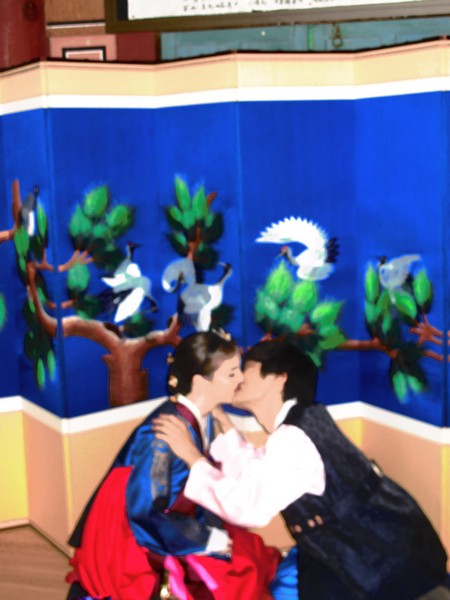
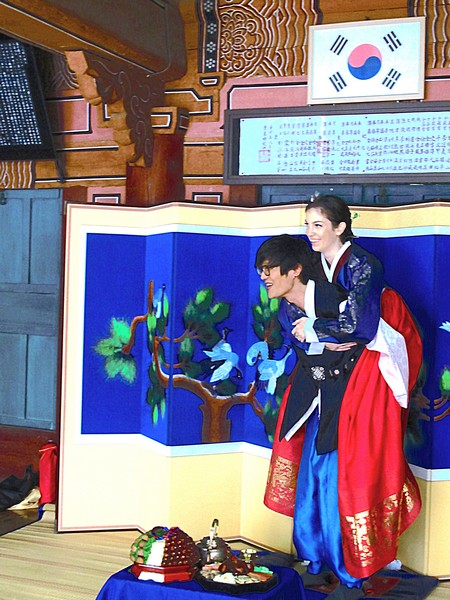
Now as we celebrate this third anniversary of our Korean ceremony and prepare for a new member to join our family of two, it’s wonderful to look back at this ceremony and think of all of the promises we made to each other then and the promises we have managed to keep to each other. All of the promises made between chuckles and giggles and we’ve kept them over three years of continued laughter. Here’s to many more years of chuckles, giggles, laughter and more together.
Did you like this post? Pin iT!
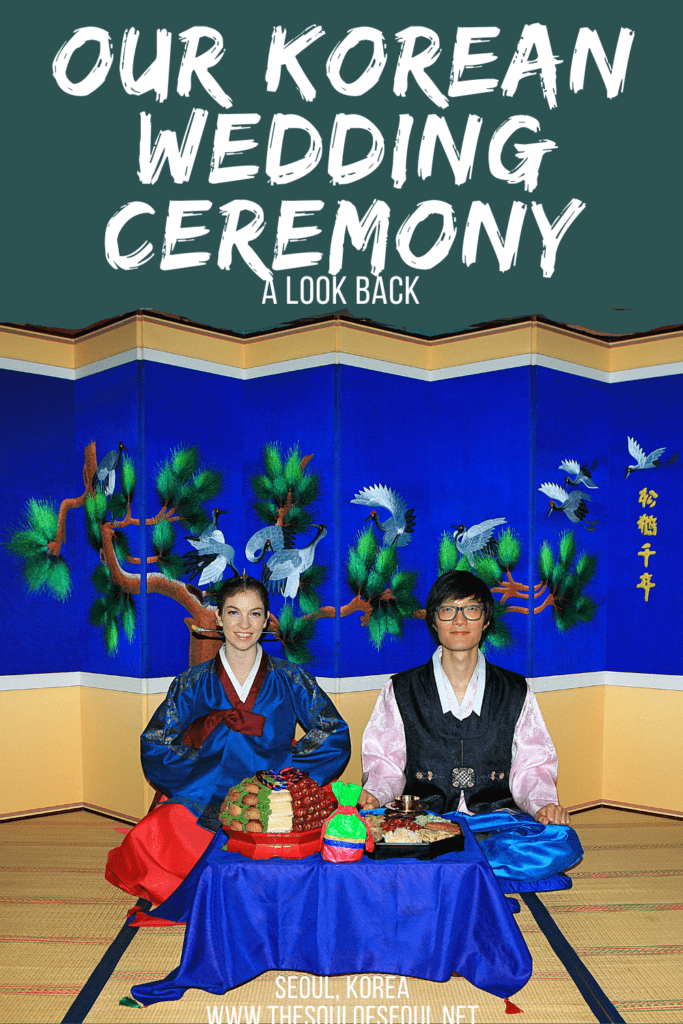
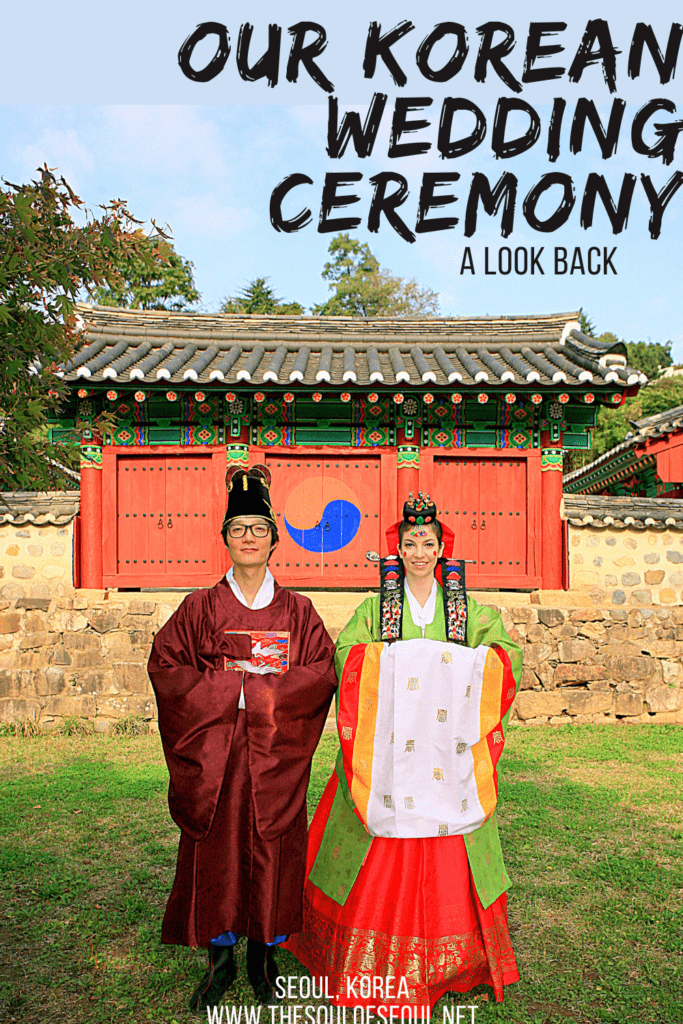
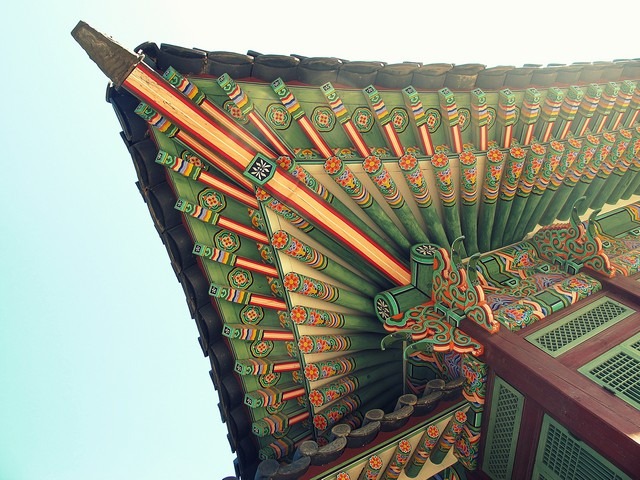

2 Comments
Kang Ju-won (강주원)
To many more indeed! 🙂
Shelley @Travel-Stained
Happy anniversary!! 😀